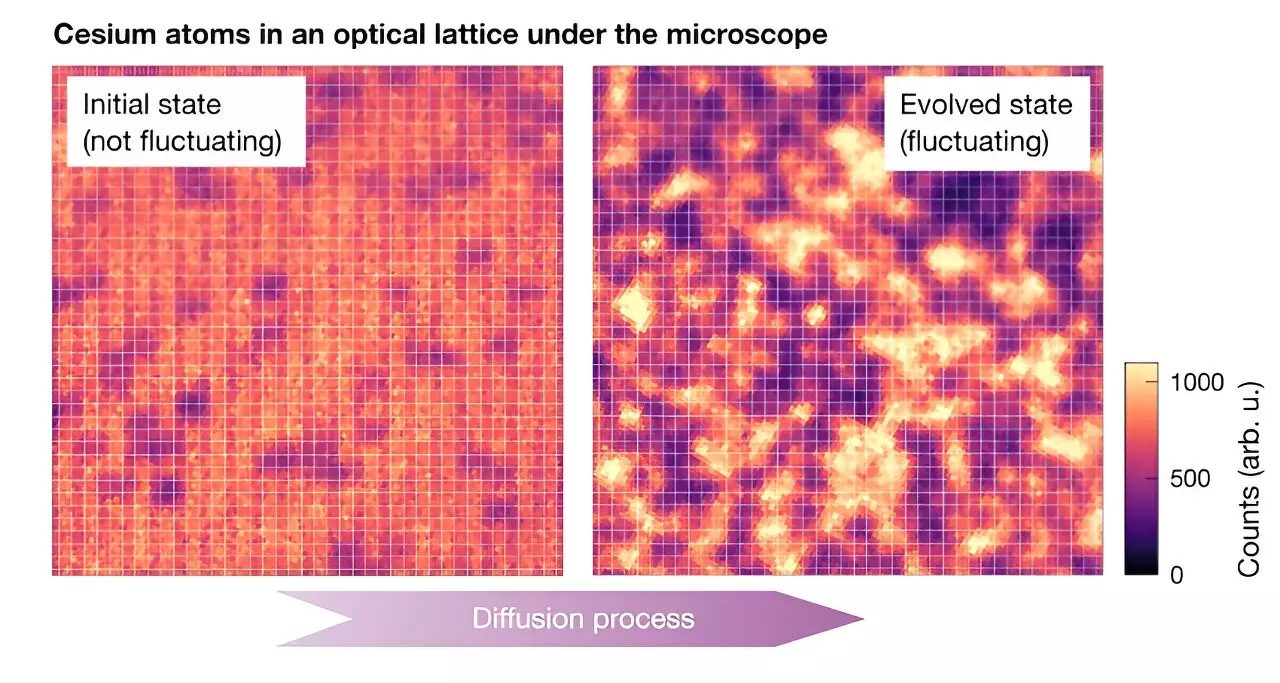The complex world of quantum physics is a realm where the conventional rules of classical physics often fail to apply. This intricate domain is constantly evolving, with researchers relentlessly exploring the behaviors and interactions of quantum particles. Recent investigations conducted by a collaborative team from Ludwig-Maximilians-Universität, the Max-Planck-Institut für Quantenoptik, the Munich Center for Quantum Science and Technology (MCQST), and the University of Massachusetts have pushed the boundaries of our understanding of equilibrium fluctuations in large quantum systems. Their work, recently published in *Nature Physics*, sheds light on how these fluctuations can be effectively modeled using fluctuating hydrodynamics (FHD), paving the way for new insights into chaotic quantum systems.
Simulating the dynamics of large quantum systems has long posed significant challenges for physicists. Julian Wienand, a co-author of the study, articulates the primary concern: “Imagine having a plethora of particles contained within a defined space while attempting to forecast their future behavior.” This approach, although conceptually straightforward, often encounters severe limitations when dealing with the sheer number of particles involved. The computational requirements for tracking each particle’s movement swiftly become unmanageable, resulting in simulation failures. However, the researchers have identified a promising alternative through hydrodynamics, a field that provides a simplified yet effective framework for understanding particle interactions within chaotic systems.
The crux of their research revolves around FHD, an adaptation of classical hydrodynamics that elegantly incorporates the effects of thermal fluctuations within a quantum system. This theoretical framework assumes that, under chaotic conditions, particles will interact in a manner that leads to thermal equilibrium at a local level. By translating particle interactions into a continuous density field—a mathematical representation that conforms to simple differential equations—the researchers have established a powerful tool to analyze complex quantum systems. As Wienand explains, “This allows us to quantify the fluctuations inherent in the system as random white noise, thereby integrating them into our differential equations.”
What makes FHD particularly noteworthy is its applicability to systems where particles exhibit quantum behaviors, including entanglement. This characteristic poses a stark contrast to classical systems, where particle interactions conform more predictively to classical mechanics. As such, demonstrating FHD’s effectiveness in chaotic quantum systems could bridge a significant gap in our understanding of quantum dynamics.
Experimental Validation Using Quantum Gas Microscopes
To test their theoretical framework, the researchers employed a 133Cs (cesium) quantum gas microscope, which enabled them to observe ultracold Cs atoms trapped within an optical lattice. This advanced apparatus provided the capacity to capture high-resolution snapshots of particle occupancy in the lattice, creating a unique experimental setup for monitoring quantum many-body systems. By manipulating the depth of the lattice and allowing for diffusion processes, the team could examine the evolution of particle fluctuations over time.
Through meticulously observing the system’s behavior post-manipulation, they were able to correlate their theoretical predictions with experimental findings. Their results indicated that the system adhered closely to FHD principles, leading to the extraction of a key parameter known as the diffusion constant. This measurement serves as a crucial indicator of the system’s dynamics and helps to characterize its thermalization process.
The groundbreaking findings outlined in this research represent a significant milestone in understanding chaotic quantum systems. They imply that principles, typically reserved for classical scenarios, may be successfully applied to quantum mechanics. By revealing that the complex and chaotic behavior of microscopic quantum systems can be simplified into manageable macroscopic dynamics described by a single parameter—the diffusion constant—the researchers are propelling forward the landscape of quantum research.
Wienand and his team are keen on continuing to investigate the nuances of quantum many-body dynamics. Key questions remain, such as the behavior of fluctuations in non-thermalizing systems, as well as exploring the possibility of incorporating more complex observables into the FHD framework. Their ongoing studies hold great potential for unraveling the intricacies of quantum behaviors and enhancing our grasp of the underlying mechanics in this fascinating field.
The innovative work from these researchers presents a transformative approach to understanding equilibrium fluctuations in large quantum systems. By introducing fluctuating hydrodynamics as a theoretical tool tailored for quantum phenomena, they are crafting a pathway toward deeper insights into the complex dynamics that govern interactions in chaotic quantum landscapes. As exploration in this field continues, the implications of their findings promise not only to enhance theoretical models but also to inspire future advancements in quantum technologies.

